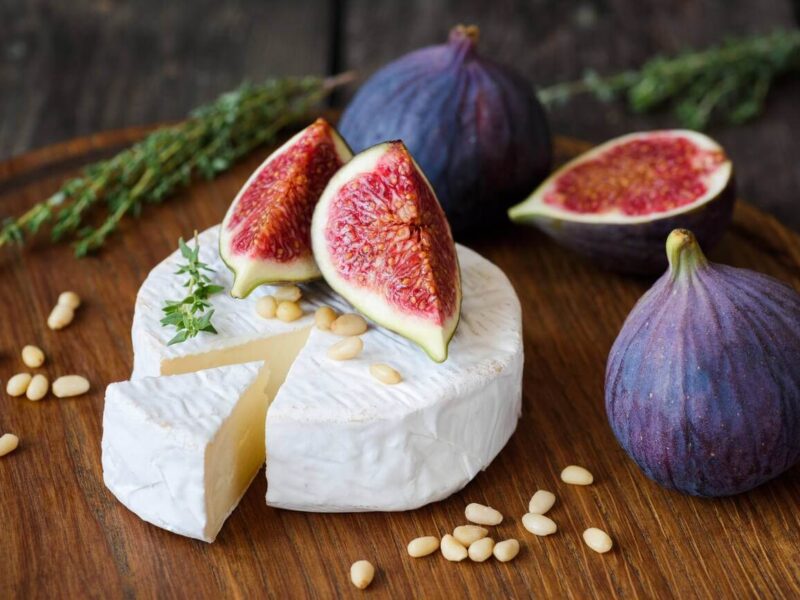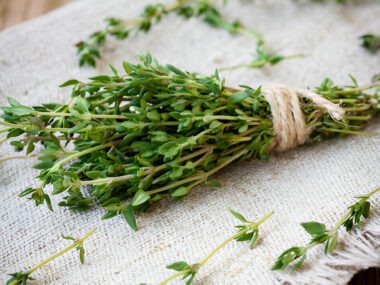Have you ever found yourself in the cheese aisle, desperately craving the creamy tang of Camembert, only to realize the fridge is stark bare of your favorite soft cheese? I’ve been there – nothing kills cheeseboard vibes like showing up empty-handed. But never fear, gouda friends! There is light at the end of the brie-less tunnel.
As any self-respecting fromager knows, no cheese stand alone. Just like a fine wine, there are always alternatives to tickle your taste buds. So today I’m spilling the beans on the best swaps when Camembert goes AWOL. From mild Brie to nutty Reblochon, these lookalikes have you covered whether you want to top a burger or just nibble with crackers.
So if the cheese gods have forsaken your usual feast, join me on a culinary scavenger hunt for Camembert’s dairy-licious understudies. By the end, you’ll be a substitute sommelier, ready to improvise any charcuterie emergency. Your guests will never know the difference – but you’ll sleep easy knowing the perfect pairing is in your back pocket. It’s grating fun for everyone!
Best substitutes for Camembert cheese
1. Brie
When it comes to fooling the flavor fiends, Brie is the clear MVP substitute for Camembert. Hailing from the same glorious dairy terrain of Northern France, Brie shares a similar supple texture and mild flavor profile with its brethren.
Unlike some pretenders to the cheese throne, Brie requires little introduction. Its snowy white rind and dollopable texture are instantly recognizable from charcuterie boards the world over. Under that downy coating lies a pillow-soft paste ranging from ivory to pale gold in hue.
Take a bite and you’ll find Brie’s taste falls on the subtler side compared to pungent Camembert. Its notes of earth and cream blend together amicably on the palate. This makes Brie a safe stand-in for any recipe where a strong cheese tang could overpower other flavors.
Perhaps the best use for substitute Brie is letting it sit at room temperature until the rind forms beads of oil. Then you can watch in amazement as it melts onto crackers, bread, and fruit alike. Its silky consistency acts as a luscious topping that’s as luxurious as Camembert itself.
So while Brie may lack a barnyard zing, its mildness makes it the most foolproof choice to bring joy (and dairy indulgence) on nights when the good stuff is nowhere to be found. Consider yourself saved by the belle of the cheese world!
2. Reblochon
Sometimes you want a substitute with more oomph – enter Reblochon. Hailing from Savoie in the French Alps, this washed-rind wonder packs some personality.
Made from raw cow’s milk, Reblochon develops its characteristic robust flavor from a daily bath of brine or saltwater during aging. This gives the supple interior paste, ranging from ivory to deep gold, a pungent aroma. It possesses tones of earth, hay and mushrooms on the nose.
The exterior rind often garners more attention, developing colorings from pale gold to reddish brown. Its striped texture and bold smell stop minglers in their tracks, begging to be sniffed. So while Reblochon may not pass as Camembert’s doppelganger on appearance alone, one taste reveals it as a more than suitable stand-in.
Bold and complex, Reblochon holds its own against robust jams, dry cider or fruity red wines. It also melts sublimely over roasted potatoes, imparting an intense savoriness. The assertive tang means you need only a small slice to satisfy.
For those nights when only an in-your-face cheese will do, let Reblochon’s brazen personality shine through. Its gutsy charm is sure to liven any cheeseboard, even without its subtler sister Camembert in sight.
3. Chameleon
For a substitute with genuine melt-in-your-mouth appeal, look no further than Brillat-Savarin. This buttery blend originated in the village of the same name in Eastern France.
Made from rich cow’s milk crème fraiche, Brillat-Savarin lives up to its triple cream moniker. At over 75% butterfat, it spreads like thickened cream yet remains spoonably soft. No wonder it’s nicknamed the “King of Cheeses”!
In terms of taste and texture, Brillat-Savarin makes for a truly elite Camembert changeling. Its downy white interior could pass as a dead ringer, emanating hints of earth, mushrooms and cream on the palate.
But where Camembert offers robust tang, Brillat-Savarin takes a smoother route. Its higher fat and lower moisture content mean it melts into silky bliss with hardly a fight. Just a few slices are all it takes to transform a weeknight soup or pasta into a decadent five-star feast.
For special occasions begging indulgence, Brillat-Savarin fulfils your dairy dreams. Whether bubbling atop a scalloped potato gratin or melting into a triple cheese soufflé, it brings luxury in every bite. Just don’t tell your guests you didn’t spring for authentic Camembert – they’ll be too swooning over the silk to know the difference!
4. Saint-André
Sometimes understatement is the most elegant substitute. Meet Saint-André, a deceptively simple cheese hiding complex flavors.
Hailing from Normandy, like our beloved Camembert, Saint-André shares its supple texture and tender white rind. But where Camembert turns on the sass, Saint-André plays the shy saint.
Its mellow paste whispering notes of cream, mushrooms and hay provides an understated counterpart to its showier siblings. The fresh dairy taste dances lightly on the tongue rather than putting on a bawdy barnyard show.
While subtle, don’t mistake Saint-André’s modesty for lacking substance. A few slices pair beautifully with orchard fruits like pear or quince, letting their sweet acidity sing.
It also quietly improves savory dishes with a smooth hand. Try melting thin slices over roast chicken or potatoes au gratin for a sophisticated dinner upgrade.
5. Chevre
When a substitute demands more zing, let chevre take center stage. Also known as goat cheese, this dairy darling delivers robust flavor with a fresh tang.
Made from goat’s milk, chevre boasts a creamier texture and more pronounced taste than cow-milk varieties. Expect notes of grass, herbs and mild acidity rather than obscured barnyard nuances.
Its flavor profile makes chevre a top-notch stand-in for recipes where Camembert’s earthier taste requires brighter backup dancers—like salads bursting with fresh greens and berries. A few crumbles are all it takes to shine.
As an bonus, chevre brings health perks beyond its flavor fireworks. Being leaner in fat and higher in protein than indulgent cow’s milk cheeses, it adds diet-friendly richness.
Plus, goat milk is easier to digest than cow’s thanks to smaller fat globules. And chevre’s probiotic content supports gut and immune health.
6. Feta
When a sturdy stand-in with serious savor is the mission, call on feta to save the day. This tangy Greek darling steals the show with savory nuance.
Crafted from sheep or goat’s milk, feta boasts a brined texture ranging from creamy to crumbly. Its crystals of salt impart bold flavor along the lines of ocean breezes, freshly turned soil and grassy herbs.
While feta may lack the supple silk of our usual hero, its character serves up savory pops wherever it treads. Crumble it atop salads, pastas or pizzas for intensity that awakens dull palates.
There will be no melting this moistness maven. But use feta’s firminess to your advantage – it holds its own better against robust ingredients too overwhelming for tender cheeses.
Slice it into cubes, skewers or filo parcels as party picks perfect for noshing or nibbling the night away. Feta steals the appetizer aisle with a savory stage presence like no other.
7. Cream Cheese
When you crave a stand-in with melt-in-your-mouth silk but Camembert is MIA, reach for cream cheese. This classic spread brings its own simple charm to the table.
Made from pasteurized cow’s milk, cream cheese offers a tender texture just firm enough to slice yet utterly luscious as it liquefies. Expect cool, delicate flavors free of pungency – the ambrosial taste of fresh dairy at its finest.
Spread cream cheese on toasted bagels for a quick breakfast or smack, pair it with preserves for an anytime nibble. But where it really shines is melting into savory recipes requiring a touch of luxury.
Blend it into quiches, pasta bakes or sauces in place of Camembert for clouds of unctuous cream. As it liquefies, a dollop maximizes comfort with minimal effort.
Just be warned – as cream cheese melts faster than fungal-rinded varieties, reduce oven heat slightly if baking. The reward is tender dishes no guest will guess cut corners on cheese.
8. Ricotta
When you crave soft, smooth creaminess but lighter indulgence, ricotta gallops to the rescue. Hailing from Italy, this fresh cheese brings velvety texture without the tang.
Crafted from whey left over from other cheesemaking, ricotta boasts an airy quality from its high moisture content. Bite into the snow-white curds and find fibers so tender they seem to dissolve.
Expect gentle flavorings of sweet dairy, perhaps hints of salt, but nary a footprint of the farmyard. Ricotta favors subtlety where others make a brazen splash.
This makes it perfect for fluffing up lasagna, manicotti or stuffed shells without heaviness. A spoonful also elegantly amplifies desserts from tiramisu to cannoli.
Ricotta packs the silky satisfaction of indulgence without upstaging other components. Let its light, creamy notes play a supporting role in any recipe needing delicate backup.
Whether scrambling into eggs or simply dolloping atop bruschetta, ricotta constantly proves its worth. For simpler substitutions letting flavors shine, keep this downy champ front and center.
FAQs
Is it possible to bake with a cheese substitute for Camembert?
Yes, most Camembert substitutes can be used in baked dishes where the cheese melts. Good options include Brie, cream cheese, goat cheese, and ricotta. You’ll want to reduce the oven temperature slightly if using cream cheese to prevent burning.
Can I substitute cottage cheese for Camembert?
Cottage cheese is not typically recommended as a substitute for Camembert because the textures are quite different. Cottage cheese has a curd-like texture whereas Camembert is soft and creamy. It may work in some cooked dishes but won’t have the same mouthfeel.
What if I’m allergic to cows milk? Can I use a non-dairy substitute?
If you have a dairy allergy, the best non-dairy substitutes for Camembert would be vegan cheese made from nut milks or rice milk. Look for soft varieties that can melt. Tofutti and Daiya make cultured vegan cheese spreads that have a similar flavor and texture to Camembert when melted.
Is it okay to substitute half Camembert and half another cheese?
Yes, combining half Camembert with half of one of its substitutes can work well in many recipes. This gives you some of the authentic flavor while stretching your Camembert further. Good pairings include half Camembert with half Brie, goat cheese or cream cheese.
Which Camembert substitute is closest in flavor?
Brie cheese is generally considered the closest substitute to Camembert in terms of flavor and texture. They are made from the same process usingSimilar milks and bacterial cultures. Brie has a mild, earthy flavor that can easily stand in for Camembert.
Can I substitute camembert with other soft cheeses like mozzarella or blue cheese?
Mozzarella and blue cheeses would not be good substitutes for camembert since their flavors and textures are quite different. Mozzarella is much milder and softer, while blue cheese is much stronger and crumblier. Stick to similar soft ripened cheeses like brie or camembert for the best flavor match.
How far in advance can I prepare something with a camembert substitute?
Most camembert substitute cheeses can be prepared in advance up to a day before serving. Soft cheeses like brie, goat cheese and cream cheese hold up well covered in the fridge for 24 hours. Just be sure to take dishes out about 30 minutes before serving so the cheese can soften slightly.
Can you freeze dishes made with a camembert substitute?
In general, it’s not recommended to freeze dishes containing soft, fresh cheeses like camembert substitutes. Freezing can cause the texture to become grainy or mealy. Exceptions may be dishes where the cheese is well blended in, like a pasta bake. For best results, only freeze cheese-containing dishes you’ll use within 2-3 months while still maintaining quality.
Are there any camembert substitutes suitable for vegans?
For vegans looking to substitute camembert, some options that have a similar creamy texture include: Nut-based cheeses (made from cashews, macadamia nuts, etc.), soy-based cheese spreads, and herbed tofu or tempeh spreads. Check labels to ensure they contain no dairy. Tofutti and Daiya make cultured vegan cheese spreads suitable for melting.
Conclusion
While Camembert remains the king of creamy, rustic cheeses, this guide proves its throne need not remain empty. With options from mild-mannered Brie to sassy Reblochon, you now have secret weapons to keep dishes cheesy and bright.
Don’t let the lack of true French brie temporarily curb your cooking mojo. Raid your fridge and find a stand-in ready to shine—whether bringing smooth silk or hearty zing.
From tricking taste buds to easy meal solutions, this cast of characters holds culinary charms of their own. The best part? Experimenting leads to new discoveries, so your palate expands along the way.
Keep this guide on hand for last-minute shopping sprints or nights when Brie just won’t do. Somewhere among these pages waits a perfect partner to enhance any recipe and your enjoyment. Bon appétit!



